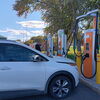Processing Your Payment
Please do not leave this page until complete. This can take a few moments.
- News
-
Editions
View Digital Editions
Biweekly Issues
- December 1, 2025
- Nov. 17, 2025
- November 03, 2025
- October 20, 2025
- October 6, 2025
- September 22, 2025
- + More
Special Editions
- Lists
- Viewpoints
-
Our Events
Event Info
Award Honorees
- Calendar
- Biz Marketplace
Theaters, bowling alleys poised to reopen, but quarantine stays in place
Indoor businesses including movie theaters, bowling alleys and massage therapists, as well as outdoor amusements, like water parks, are among those that can open Wednesday, right before the long Fourth of July weekend.
But easing restrictions on out-of-state visitors, a major sticking point for the tourist industry, and opening indoor service for bars, are not changing.
The Mills administration this week posted COVID-19 Prevention Checklists for businesses and activities that can reopen July 1 as part of stage 3 of the the administration’s Restarting Maine’s Economy plan.
The third stage means much of Maine’s economy will be reopened, with restrictions, but despite major pressure from the tourist industry, state officials said Wednesday the state is, at least for now, keeping the requirement for a 14-day in-state quarantine for visitors from all other states except New Hampshire and Vermont, or a negative COVID-19 test within 72 hours.
The hospitality industry, particularly the lodging sector, has kept steady pressure on Gov. Janet Mills, including open letters, news conferences demanding a change and proposing a $800 million plan to help the industry recover. The summer tourist season sustains most of Maine's hotels, motels, inns and other lodging establishments, and much of it is being lost to the shutdowns.
A group of York County innkeepers Monday said they've already had six-figure losses, and other businesses in their communities are feeling the effects of the lack of visitors. In 2018, the last year for which figures are available, $980 million of the $1.78 billion tourists spent was on lodging.
Quarantine staying put 'for now'
Heather Johnson, director of the Department of Economic and Community Development, said at Wednesday's Maine CDC briefing that the state continues "to look for solutions and safe protocols to be able to expand as safely and as effectively as we can, and we'll continue to evaluate options as go we go forward."
But she said that the plan in place now, including the quarantine and testing option, "is that combination of economic health and public health" that the state is trying to maintain.
Nirav Shah, director of the Maine CDC, said that allowing out-of-staters to quarantine in their own state before coming to Maine, rather than doing it here, is "something that's been discussed" and is not off the table, but having people quarantine in Maine is the best way to verify "to the extent possible" that they've done it.
Business owners and hospitality industry advocates have said it's unrealistic to expect most visitors in Maine to quarantine in the state for two weeks before starting their visit. The average overnight visitor spends three to four nights in Maine, according to the 2018 Maine Officer of Tourism report.
Shah said the quarantine as a tool to keep COVID-19 from spreading is underscored by the fact that New York, New Jersey and Connecticut have put similar in-state quarantine requirements in place, with strict enforcement, after COVID-19 cases in other states have risen dramatically in the past week or two.
"It's clear that those three states see the 14-day quarantine as an effective option to protect their citizens in the same way that Maine has had those same requirements in place for some time," he said. He added that Maine has gone beyond that with the option of a negative test instead of quarantining.
Johnson and Shah said while enforcement options are in place, none has been used. Johnson said the state prefers an "education-first approach," as well as partnering with municipalities.
Set to reopen July 1
Businesses that can open, and have been provided checklists, include:
- Spas and skin care establishments, including laser hair removal and similar services;
- Outdoor amusements, such as amusement parks and water parks;
- Indoor amusements, such as bowling and arcades;
- Movie theaters;
- Performing arts venues
- Overnight charter boats, excursions
- Overnight summer camps
Mills and Johnson said that the state continues to work with businesses and sectors to tweak checklists and the reopening plan.
Shah said Wednesday that the distinction between movie theaters and bowling alleys being able to open when bars still can't has to do with "duration and density."
It's easier to separate individuals and groups that are together in movie theaters and bowling alleys, even though they must adhere to 50-person limits and keep a six-foot space, because they are more open and the activities are different than what takes place in bars. The delay in opening bars came after outbreaks in Florida and Idaho directly tied to individual bar patrons in each place causing outbreaks that affected dozens of people.
Vigilance still urged
Mills, in a news release, said, the Stage 3 reopenings are a positive step forward for Maine and the economy, but cautioned people and businesses to remain vigilant.
“The increasing, and in some instances record high, number of COVID-19 cases in other states are cautionary tales for Maine as we continue our reopening, monitor the prevalence of the virus here, and look towards our economic recovery," she said. "Nothing would be more devastating to our economy than a significant surge in the virus that sickens and kills more people and jeopardizes our health care capacity. By taking good care of ourselves and others, we can continue to reopen safely.”
Adjusted for population size, as of June 22, Maine ranked eighth lowest in the nation in terms of positive cases; 11th lowest in the nation in terms of deaths; 6th lowest in terms of patients ever-hospitalized out of the 36 states reporting; and 5th highest in the percentage of people who have recovered out of the 43 states reporting. Shah said those are all metrics the state uses to determine reopenings and other measures, as well as how the numbers change, for better or worse.
Shah said the reason Maine has done so well is because people have "listened to the science," including wearing face coverings and practicing social distancing.
"[The numbers] are not an accident, they are because Maine people have stepped up to the challenge and continue to do so," he said. "Credit for our numbers goes entirely to the people of Maine, and I continue to thank them."
Mainebiz web partners

The Giving Guide
The Giving Guide helps nonprofits have the opportunity to showcase and differentiate their organizations so that businesses better understand how they can contribute to a nonprofit’s mission and work.
Learn More
Work for ME
Work for ME is a workforce development tool to help Maine’s employers target Maine’s emerging workforce. Work for ME highlights each industry, its impact on Maine’s economy, the jobs available to entry-level workers, the training and education needed to get a career started.
Learn More
Groundbreaking Maine
Whether you’re a developer, financer, architect, or industry enthusiast, Groundbreaking Maine is crafted to be your go-to source for valuable insights in Maine’s real estate and construction community.
Learn more-
The Giving Guide
The Giving Guide helps nonprofits have the opportunity to showcase and differentiate their organizations so that businesses better understand how they can contribute to a nonprofit’s mission and work.
-
Work for ME
Work for ME is a workforce development tool to help Maine’s employers target Maine’s emerging workforce. Work for ME highlights each industry, its impact on Maine’s economy, the jobs available to entry-level workers, the training and education needed to get a career started.
-
Groundbreaking Maine
Whether you’re a developer, financer, architect, or industry enthusiast, Groundbreaking Maine is crafted to be your go-to source for valuable insights in Maine’s real estate and construction community.
ABOUT
NEW ENGLAND BUSINESS MEDIA SITES
No articles left
Get access now
In order to use this feature, we need some information from you. You can also login or register for a free account.
By clicking submit you are agreeing to our cookie usage and Privacy Policy
Already have an account? Login
Already have an account? Login
Want to create an account? Register
Get access now
In order to use this feature, we need some information from you. You can also login or register for a free account.
By clicking submit you are agreeing to our cookie usage and Privacy Policy
Already have an account? Login
Already have an account? Login
Want to create an account? Register











0 Comments